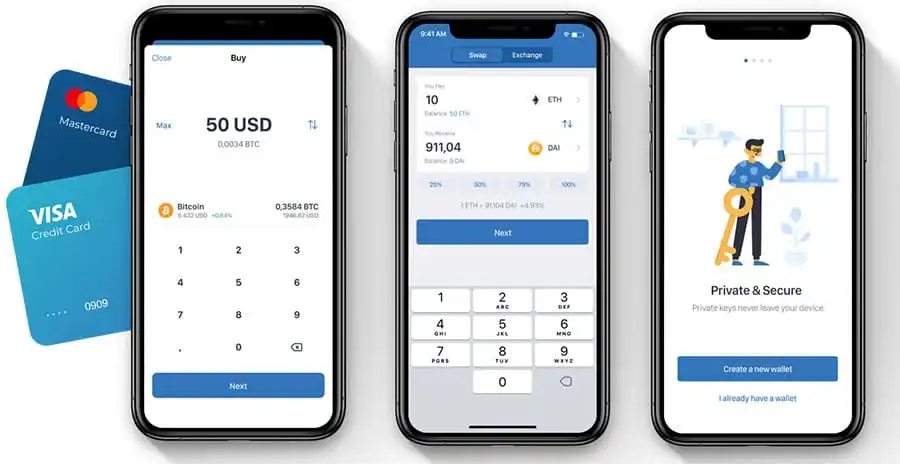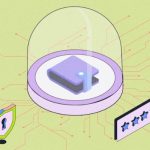Crypto Wallet Setup Simplified: Secure Your Digital Gold Today
So, you want to know how to setup a crypto wallet. Great move! This is where you take control of your digital coins. I’ll make it easy for you. We’ll dive into picking the best wallet, setting it up, and locking it tight. No jargon, just straight talk. Ready to be your own bank? Let’s roll!
Choosing the Right Crypto Wallet for Your Needs
Hot Wallet vs. Cold Wallet
When it comes to crypto, keeping your coins safe is key. You might ask, “Should I choose a hot wallet or a cold wallet?” The answer: it depends on how you’ll use them. A hot wallet connects to the internet and makes it easy to trade daily. But, they are less secure because they are online. A cold wallet is not connected to the internet, which makes it much safer from hackers. Think of a hot wallet like a checking account and a cold wallet as your savings.
For daily use, a hot wallet works best. It’s great for buying and selling fast. A cold wallet is top-notch for saving crypto for the future. Remember, with a cold wallet, your coins are offline. This means they aren’t easy targets for online thieves. A cold wallet is like a strong safe for your digital gold.
Hardware Wallet Setup vs. Software Wallet Download
Picking between hardware and software wallets is another big choice. You might be asking, “What’s the process to set up a hardware wallet versus downloading a software wallet?” Well, a hardware wallet is a small device that keeps your crypto offline. It’s a type of cold wallet. Setting one up means writing down a recovery phrase. This phrase is a key to get back into your wallet if you lose it. Always keep it somewhere safe!
For a software wallet, you download an app or program. This is a type of hot wallet. Make sure to pick a strong password when you set one up. Choosing a secure password keeps your coins safe. With these wallets, always check for updates to keep your crypto secure.
With a hardware wallet, you plug it into a computer to make trades. When you’re done, remove it, and your crypto stays safe. With software wallets, you can trade from your phone or computer. But, they are online, so they can be at risk. Just like a house needs a good lock, your wallet needs good security.
Hardware Wallet Setup:
- Choose and buy a hardware wallet.
- Write down the recovery phrase.
- Follow the device’s guide to finish the setup.
Software Wallet Download:
- Download a trusted wallet app.
- Create a wallet address.
- Pick a strong password.
Each has its pros and cons, but the core idea is always security. For both types, learning to manage wallet transactions safely is a part of the game. Linking wallets to bank accounts should always be done with care too. Thinking about what fits your needs will guide you in your wallet choice. Remember, in the world of crypto, being safe is as crucial as being smart.
The Initial Setup Process
Blockchain Wallet Configuration
Starting a crypto wallet is like opening a digital treasure box. A must-have first step is choosing your wallet type. You’re probably pondering between hot and cold wallets. A hot wallet has an internet link, making it convenient for daily trades. A cold wallet, though, is offline, which is safer, but a tad less handy.
A mobile wallet or desktop wallet could be your pick for easy access. Mobile wallet installation is a breeze; just download, install, and open. For desktop fans, a software wallet download follows a similar route with a desktop wallet tutorial to guide you.
Multicurrency wallets let you manage different types of digital gold in one place. If you swim in various crypto streams, this might be your ticket. Once you choose, it’s time for the wallet address creation. Get this ready, and you’re halfway there.
Securing Private Keys and Public Key Management
Your private key is the magic key to your crypto kingdom. I always say, losing it is like throwing your treasure chest key into the sea. Let’s nail this down. Store your private key somewhere safe. Think of it like the code to a vault. Make it tricky for sneaky eyes but easy for you to remember.
Public keys? They’re like your P.O. Box for crypto. Share it without stress, but keep your private key under wraps. Now, a hardware wallet is a stout fortress for your crypto. Ledger Nano setup or Trezor wallet initialization is not too tricky. Just follow the steps, and boom! You’re ready.
Online wallet safety tips always say one thing loud and clear: protect against cyber threats. Encrypting your crypto wallet isn’t just smart; it’s a must. And remember two-factor authentication? That’s your guard dog for wallet security. Decent passwords are also a hero. Choose a secure password that’s a tough nut to crack.
But the real silver bullet here is the seed phrase storage. Those words are a lifeline if trouble comes knocking. Jot them down and store them like a map to a secret island. With this, even if disasters strike, a wallet recovery option is there to save the day.
To wrap up, start strong. Pick wisely. Keep your treasures locked tight. Keep your keys safe and complex. And seed phrases – they’re golden, guard them with your life. Start this way, and you’re set on a safe crypto journey.
Picking the perfect wallet and setting it up can be easy street. If you take your time and stick to these simple rules, your digital gold will be as snug as a bug. Dive into the crypto ocean, but always swim with safety.

Enhancing Wallet Security Measures
Wallet Backup Procedures and Seed Phrase Storage
Let’s talk about keeping your digital gold safe. First, back up your wallet. This is huge. It’s like making a key for a lock, but so much more. Your backup is a seed phrase – it’s a set of words that holds all your coins. If you lose it, it’s game over for your cash. So, write down your seed phrase. Keep it off computers. Hide it well. Think of it like the most valuable secret you have.
Seed phrases should be a random mix of words given when creating a digital wallet. Always write it down right away and store it safely. This can be in a safe, a safety deposit box, or any secure spot you trust. Not on your computer or phone. They can be hacked or broken. Real paper or metal is best. It ties your whole crypto wallet setup together.
Two-factor Authentication and Wallet Encryption
Next step – lock it down with another layer. We call this two-factor authentication (2FA), and it’s like a double lock. You’ll need something you know, like a password, and something you have, like your phone. Hackers hate this because it’s hard to beat.
When you turn on 2FA, you’ll get a code sent to you when logging in or doing big stuff, like moving money. Without the code, no one’s getting in. It’s a simple weapon against big-time cyber thieves.
How about making your wallet into a fortress? That’s wallet encryption. It scrambles your wallet info so only someone with your password can read it. Make your password strong. Like “super secret password” but way smarter. Mix in numbers, symbols, and both small and big letters. Change it often and never reuse or share it.
Encrypting your crypto wallet takes your security up a notch. It means even if someone gets your wallet data, they can’t do much with it. You can usually encrypt your wallet straight from your wallet’s software. It’s like a secret code that only you and your wallet know.
Just like that, with backups and locks, you’re set up to keep your digital treasure out of the wrong hands. Remember, the power to protect your coins is in your hands. With hot wallets online and cold wallets offline, you choose how cold or hot, you want your wallet security.
And always stay sharp – technology changes and so do the tricks of cyber crooks. Keep up with the latest to stay safe. Your future self will thank you for keeping your digital gold locked down tight.
Managing and Maintaining Your Wallet
Wallet Synchronization and Recovery Options
Setting up a crypto wallet? Great! Now, keep it in sync. This means your wallet’s info updates with the blockchain. For this, your wallet “talks” to a network of computers. This is vital for your wallet to show correct balances and past actions.
If your device breaks or gets lost, you’ll need your wallet info back. Wallet recovery options can save the day. Always have your backup. It’s a unique set of words called a seed phrase. The seed phrase is a master key to all your crypto. Write it down. Store it safe. Without it, you may lose all your digital gold.
Verifying Transactions and Safe Practices for Managing Wallet Transactions
Now, let’s talk about moving your crypto safely. Always double-check the wallet address you send to. It must match the receiver’s exact address. If you send it to the wrong place, it’s gone for good.
For safe wallet transactions, follow these tips:
- Encrypt your wallet. This puts a strong lock on your wallet. Only you can open it with your password.
- Use two-factor authentication (2FA). This is like a double lock. Even if someone gets your password, they can’t get in without this second key.
- Keep your software updates. This makes sure you have the latest security for your wallet.
Taking these steps keeps your digital gold safe from thieves. Remember, in the crypto world, you are your own bank. And with great power comes great responsibility. So stay sharp, and protect your treasure.
We’ve covered a lot to help you pick and secure a crypto wallet. First, we tackled hot and cold wallets, weighing their risks and perks. Remember, hot wallets are less secure but more user-friendly, while cold wallets offer more security but are less convenient. Next, we set up hardware and software wallets. With hardware, you get a physical device; with software, a digital app.
We then dove into the first steps: picking your blockchain wallet and keeping your keys safe. It’s all about control and privacy. Finally, we talked security—backing up your wallet and using two-factor authentication are must-dos.
Wrapping up, maintaining your wallet means regular checks and smart transaction habits. Sync your wallet, know how to recover it, and always double-check your sends and receives.
In all, stay informed and proactive. Your crypto wallet is your bank in this digital age, and its safety rests with you. Take these lessons, and keep your investment secure.
Q&A :
What Are the Steps to Set Up a Crypto Wallet?
Setting up a crypto wallet involves a few key steps. Start by choosing the right type of wallet that fits your needs — be it a software wallet, hardware wallet, or a paper wallet. Once you’ve chosen the type, download the necessary software or purchase the hardware wallet. Then proceed by setting up strong security measures, which often include a strong password, a seed phrase for recovery, and enabling two-factor authentication (2FA). Finally, test your wallet by receiving and sending a small amount of cryptocurrency.
Can You Create a Crypto Wallet for Free?
Yes, you can create a crypto wallet for free. Most software wallets, such as mobile apps or desktop wallets, do not charge you for the wallet itself. They are readily available for download and only require internet access to operate. However, remember that transactions will incur network fees independent of the wallet being free.
What Is the Safest Crypto Wallet to Use?
The safety of a crypto wallet depends largely on how it is used and handled by the owner, but hardware wallets are generally considered the safest option for storing cryptocurrencies. They are physical devices that store your private keys offline, thereby offering an additional layer of security against online hacks. Always research and choose a hardware wallet from reputable manufacturers to ensure maximum protection.
How Do I Recover a Crypto Wallet If I Lose Access?
Recovering access to your crypto wallet generally depends on the safeguards you’ve set up during the initial creation. Most wallets provide a recovery seed or phrase during setup, which usually consists of 12 to 24 words. This seed phrase must be stored securely and can be used to regain access to your funds on a new device if you lose your wallet. Without the recovery phrase, it is nearly impossible to recover lost funds.
What Should I Look For in a Crypto Wallet?
When selecting a crypto wallet, look for features such as user-friendly interfaces, strong security measures including backup options, compatibility with various cryptocurrencies, and the reputation of the wallet provider. It’s also important to consider whether you need a hot wallet (which is connected to the internet) for regular transactions, or a cold wallet (offline wallet) for long-term storage of crypto assets. Evaluate your needs and choose accordingly.




